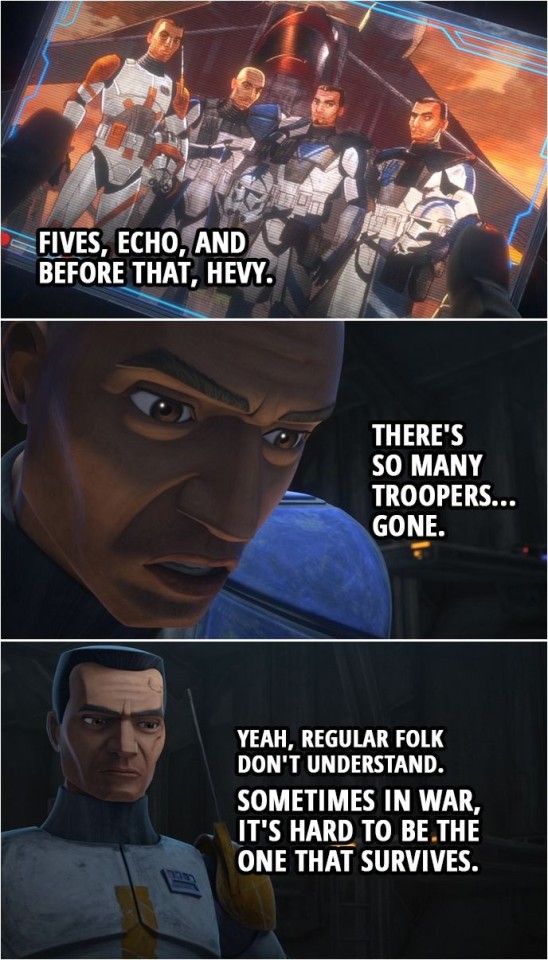Some Sketches Of Rosario Dawson As Ahsoka Tano 🤍 I Wish Her Lekku Were Longer However I Really Liked

Some sketches of Rosario Dawson as Ahsoka Tano 🤍 I wish her Lekku were longer however I really liked how she portrayed her
More Posts from Xdirewolfx and Others
Blade runner style film photography from Bangkok Chinatown







Behind the scenes vlog:
NASA Sees Our Ocean in Color. How About You?
Take a deep breath. Feel the oxygen in your lungs. We have the ocean to thank for that! Over long time scales, between 50 and 70 percent of our planet's oxygen is produced by microscopic organisms living in the ocean.

Today is World Oceans Day! And as our planet’s climate continues to change, we want to understand how one of our biggest ecosystems is changing with it. Wondering how you can celebrate with NASA? We’ve got downloadable coloring pages and online coloring interactives to show how we study the ocean. Read on.
From Space to Sea

Download ocean missions coloring page here Download Sentinel-6 Michael Freilich coloring page here
We use planes, boats, Earth-observing satellites and much more to study the ocean and partner with organizations all over the world. Here are a few examples:
From Sea
The Export Processes in the Ocean from Remote Sensing (EXPORTS) is oen way we study the ocean from the sea. study changes in the ocean’s carbon cycle. In May, scientists and crew conducted research on three ships in the Northern Atlantic Ocean. They hope to create models to better understand climate change patterns.
From Space
Launched last year, the Sentinel-6 Michael Freilich spacecraft began a five-and-a-half-year prime mission to collect the most accurate data yet on global sea level and how our oceans are rising in response to climate change. Sentinel-6 Michael Freilich is just one of many satellites monitoring the ocean from space. Together with other Earth-observing spacecraft, the mission will also collect precise data of atmospheric temperature and humidity to help improve weather forecasts and climate models.
Finding Eddies

Download Eddies Coloring Page The ocean is full of eddies – swirling water masses that look like hurricanes in the atmosphere. Eddies are often hot spots for biological activity that plays an important role in absorbing carbon. . We find eddies by looking for small changes in the height of the ocean surface, using multiple satellites continuously orbiting Earth. We also look at eddies up close, using ships and planes to study their role in the carbon cycle.
Monitoring Aerosols and Clouds

Clouds coloring interactive here
Aerosols coloring interactive here
Tiny particles in the air called aerosols interact with clouds. These interactions are some of the most poorly understood components of Earth's climate system. Clouds and aerosols can absorb, scatter or reflect incoming radiation -- heat and light from the Sun -- depending on their type, abundance and locations in the atmosphere. We’re building new instruments to better understand aerosols and contribute to air quality forecasts.
The Ocean in Living Color Download PACE coloring page here

The Plankton, Aerosol, Cloud, ocean Ecosystem (PACE) mission will continue and greatly advance observations of global ocean color, biogeochemistry, and ecology, as well as Earth’s carbon cycle and atmospheric aerosols and clouds. It’s set to launch in late 2023 to early 2024. Want to learn more? Click here to see how PACE will collect data and here to see what PACE will see through our coloring interactives. (Make sure to check out the hidden surprises in both!)
Exploring Ocean Worlds on Earth and Beyond
Download Clouds coloring page here

Using our understanding of oceans on Earth, we also study oceans on other planets. Mars, for example, contains water frozen in the ice caps or trapped beneath the soil. But there’s even more water out there. Planets and moons in our solar system and beyond have giant oceans on their surface. Saturn’s moon Enceladus is thought to have a massive ocean under its frozen surface, which sometimes sprays into space through massive fissures in the ice.
Learn more about ocean worlds here: nasa.gov/oceanworlds
Interested in learning more about how NASA studies oceans? Follow @NASAClimate, @NASAOcean and @NASAEarth.
You can also find all the coloring pages and interactives here.
Make sure to follow us on Tumblr for your regular dose of space: http://nasa.tumblr.com.

That’s not very nice, Boba :|

I'm a simple man making his way through the galaxy.

Sketch of Kylian Mbappé ✨

happy star wars day to HER

Sith Anakin on Mustafar 🔥
My boy Rex...
Rex's Biggest Regret
So I've been thinking about this scene right here:

I always found it odd that Rex would mention Hevy in that list despite only knowing him for such a short amount of time. Especially when you think of Hardcase who we know has fought beside him for a long time or Tup who died right before Fives. That is until I remembered what happened in the episode Rookies when Rex goes:

And later in the episode we see this:

And then it shows Rex leaving first because "I'm always first."

And we all know how that episode ends.
Now move ahead to Plan of Dissent and what do we see?

Rex is in the back. He probably blamed himself for Hevy's death and felt guilty for being the first one out not even realizing Hevy wasn't with them. He was the one to give Hevy the job to fix the remote. He never stopped to check if Hevy was behind them until it was to late. He mentions Hevy because he was probably Rex's biggest regret. He was a shiny who just saw real combat for the first time. Rex probably spent nights lying awake thinking of how Hevy's death could have been avoided. Of what he could have done different. It's something he probably never lets himself forget.
-
 ginger-swag-rapunzel reblogged this · 2 years ago
ginger-swag-rapunzel reblogged this · 2 years ago -
 o98 liked this · 2 years ago
o98 liked this · 2 years ago -
 skyjennysworld liked this · 3 years ago
skyjennysworld liked this · 3 years ago -
 anatanotegami liked this · 4 years ago
anatanotegami liked this · 4 years ago -
 quillandink-tmblr liked this · 4 years ago
quillandink-tmblr liked this · 4 years ago -
 overgrowthsystem liked this · 4 years ago
overgrowthsystem liked this · 4 years ago -
 eternallydamnedjay reblogged this · 4 years ago
eternallydamnedjay reblogged this · 4 years ago -
 mooshieshroom liked this · 4 years ago
mooshieshroom liked this · 4 years ago -
 specter-7-reporting-in liked this · 4 years ago
specter-7-reporting-in liked this · 4 years ago -
 ughwaitwhat liked this · 4 years ago
ughwaitwhat liked this · 4 years ago -
 jessica10o5 liked this · 4 years ago
jessica10o5 liked this · 4 years ago -
 loverofclones liked this · 4 years ago
loverofclones liked this · 4 years ago -
 youbo2002 liked this · 4 years ago
youbo2002 liked this · 4 years ago -
 finallyouttathatdress liked this · 4 years ago
finallyouttathatdress liked this · 4 years ago -
 cute-but-chotic liked this · 4 years ago
cute-but-chotic liked this · 4 years ago -
 sweetiepie08 liked this · 4 years ago
sweetiepie08 liked this · 4 years ago -
 floatingvampire liked this · 4 years ago
floatingvampire liked this · 4 years ago -
 goddess-of-congeniality liked this · 4 years ago
goddess-of-congeniality liked this · 4 years ago -
 dipperpinesthemanlyman reblogged this · 4 years ago
dipperpinesthemanlyman reblogged this · 4 years ago -
 dipperpinesthemanlyman liked this · 4 years ago
dipperpinesthemanlyman liked this · 4 years ago -
 batcallum liked this · 4 years ago
batcallum liked this · 4 years ago -
 noisyfestivaltacoegg liked this · 4 years ago
noisyfestivaltacoegg liked this · 4 years ago -
 creepypasta-riot liked this · 4 years ago
creepypasta-riot liked this · 4 years ago -
 nightwussy liked this · 4 years ago
nightwussy liked this · 4 years ago -
 tintind liked this · 4 years ago
tintind liked this · 4 years ago -
 anakinisvaderisanakin liked this · 4 years ago
anakinisvaderisanakin liked this · 4 years ago -
 lololollollolo liked this · 4 years ago
lololollollolo liked this · 4 years ago -
 ezras-starry-bridges liked this · 4 years ago
ezras-starry-bridges liked this · 4 years ago -
 jessmac566 liked this · 4 years ago
jessmac566 liked this · 4 years ago -
 razena8 reblogged this · 4 years ago
razena8 reblogged this · 4 years ago -
 fleacollar999 liked this · 4 years ago
fleacollar999 liked this · 4 years ago -
 razena8 liked this · 4 years ago
razena8 liked this · 4 years ago -
 shadows-snakes liked this · 4 years ago
shadows-snakes liked this · 4 years ago -
 dissapointingpancake liked this · 4 years ago
dissapointingpancake liked this · 4 years ago -
 fanartcollectorwriter liked this · 4 years ago
fanartcollectorwriter liked this · 4 years ago -
 dyingisfortheweekends liked this · 4 years ago
dyingisfortheweekends liked this · 4 years ago -
 ouiouibaguette567 liked this · 4 years ago
ouiouibaguette567 liked this · 4 years ago -
 whatapunk reblogged this · 4 years ago
whatapunk reblogged this · 4 years ago -
 whatapunk liked this · 4 years ago
whatapunk liked this · 4 years ago -
 kitkatt16 liked this · 4 years ago
kitkatt16 liked this · 4 years ago -
 bsmr261 reblogged this · 4 years ago
bsmr261 reblogged this · 4 years ago -
 avengersstopbreakingmyheart reblogged this · 4 years ago
avengersstopbreakingmyheart reblogged this · 4 years ago -
 levi-snk liked this · 4 years ago
levi-snk liked this · 4 years ago -
 gol-portgas-d-ace liked this · 4 years ago
gol-portgas-d-ace liked this · 4 years ago -
 iggyball12 liked this · 4 years ago
iggyball12 liked this · 4 years ago









